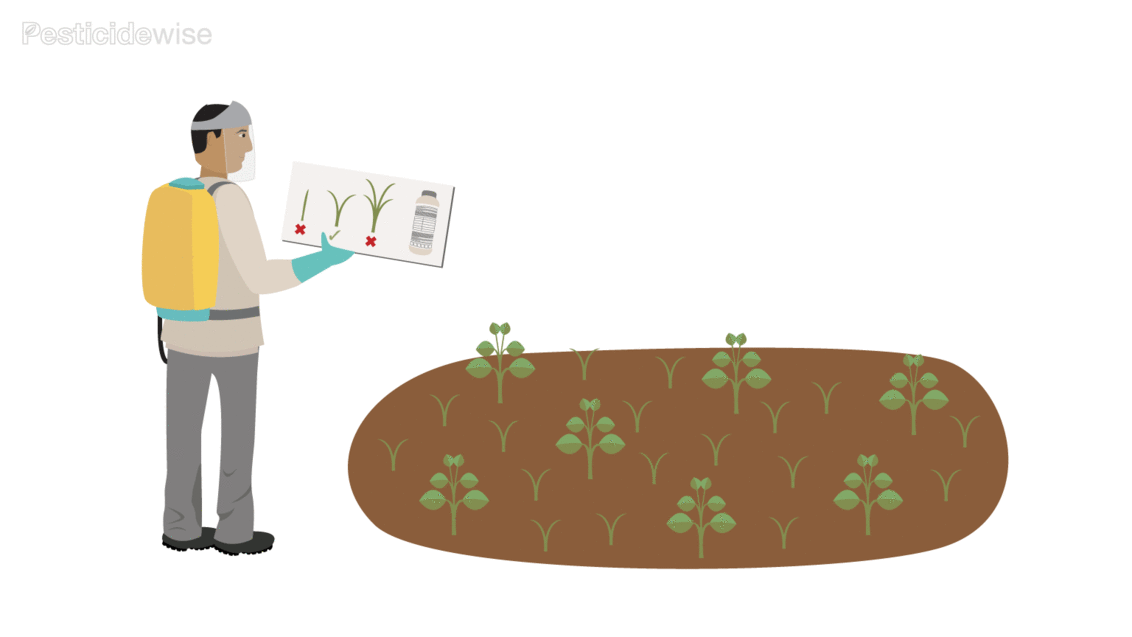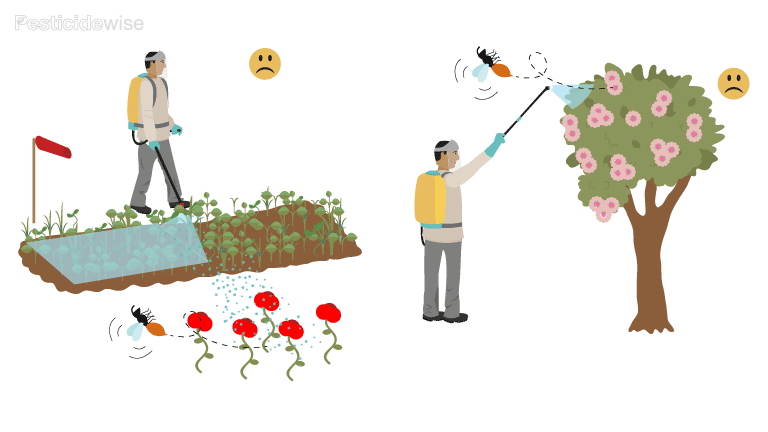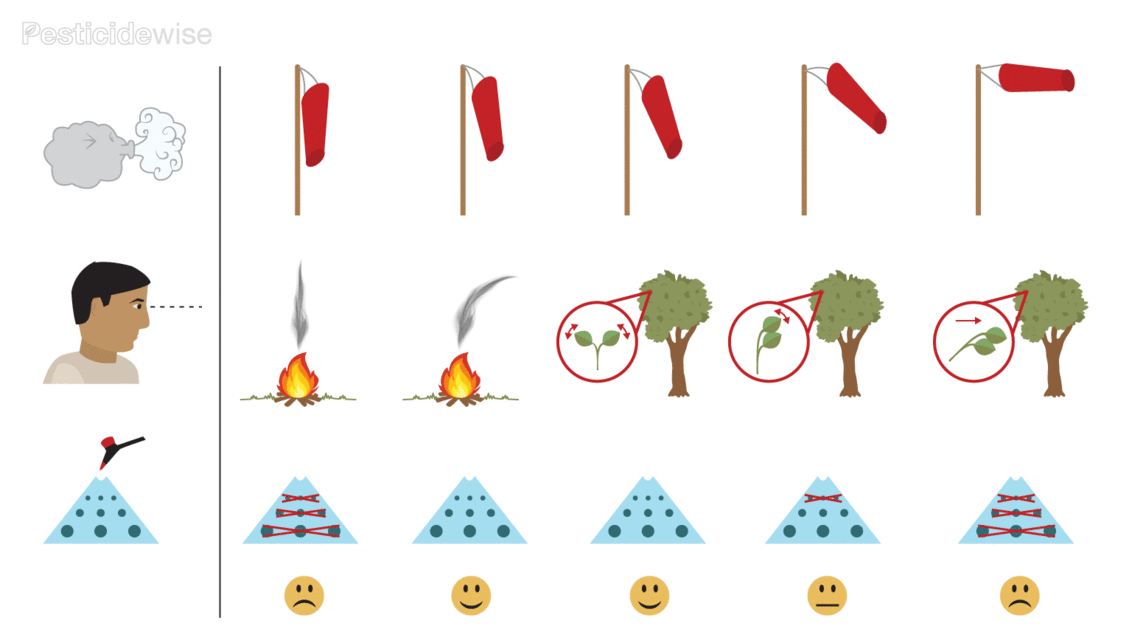Preparing to use pesticides
Learn about the choices you will need to make and understand why spraying at the right time, and in the right weather, matters.
Make the right choices
add
remove
To get the best control of your pest you need to apply:
- the right pesticide product at the right dose at
- the right time using
- the right pesticide spraying technique with
- the equipment properly set up and calibrated.
This will help you to get good coverage on the target surfaces.
Choosing the right pesticide is thus only the first step. You will also need to know about timing and to understand about the links between spray mix/water volume, nozzle type, nozzle size, nozzle pressure, flow rate, drop size, spraying speed and the distance of the nozzle from target surface and what that means when setting up your sprayer.
As we work through the knapsack spraying process, this website will help you make the right choices, one step at a time. Once you know the pesticide you will use and have your product label, the first step is to find the right time to spray. Here we explain why that matters.
Finding the right time to spray matters
add
remove
Know the growth stage of your crop

Many pesticides only have full effect at a key stage in the life of the pest and/or crop. For example, when:
- the weed is at an early growth stage; or when
- the level of disease or the number of insects is low.
You will need to consult your pesticide label to find if there are any key stages to be aware of. If there are, you will need to estimate the dates when your crop and pest will be at that key stage and ready to spray. You will also need to read your pesticide label to find out if there is:
- a witholding period (when the treated area may not be entered), and/or
- a harvest interval during which the crop may not be harvested.
These may restrict your 'spraying window' by limiting the dates between which you can spray.

- Do not spray any plant that is in flower.
- Do not allow drift to land on any plant that is in flower.
Spraying in the right weather matters
add
remove
Rain, heat, cold and wind speed can affect how well your pesticide gets to and remains on your target surfaces.
Pesticide that fails to reach the target surface, or runs off, is wasted. It not only wastes your money but it may also pollute the soil or ground or surface water.
Pesticide that drifts on the wind may contaminate you, any people or animals nearby, or other plants of value.
Assess the wind to avoid spray drift and inversions. Do not spray if the wind speed is too high or if the air is still. Often it is less windy in the early morning and in the evening.

Judge safe wind speeds by using wind socks. The ideal wind speed is 3.2 - 6.5 km/h (1.5 MB .pdf). This is a light breeze which is strong enough to feel on the face or rustle leaves. Do not spray if the wind speed is less than 3 kph: this is calm to light air where leaves are still and any smoke rises vertically. Do not spray if wind speeds are above 20 kph: this is moderate breeze where small branches and leaves move constantly in the wind.
Check your pesticide label for advice on the best weather conditions before, during and after spraying. Check the weather forecast for the best time to spray.